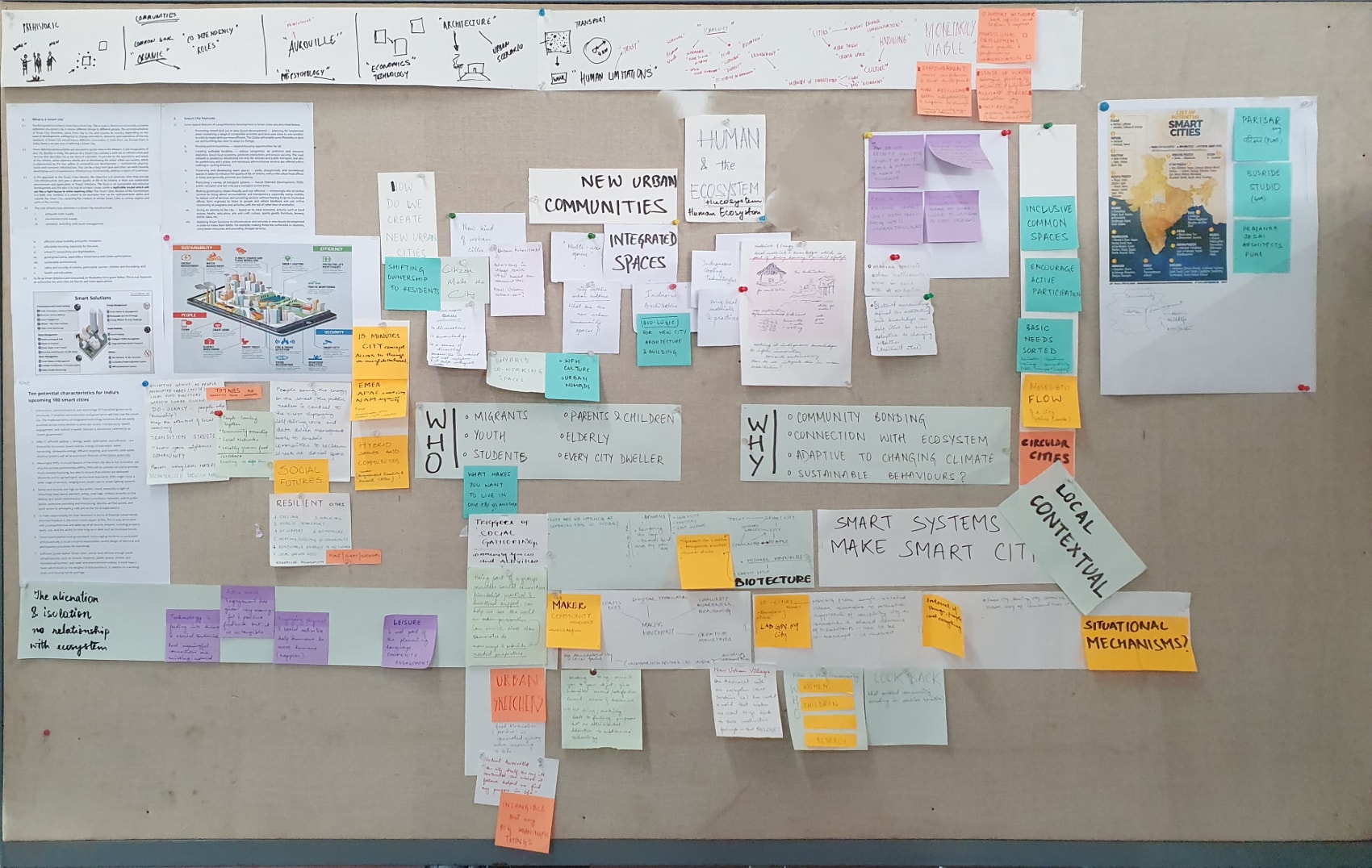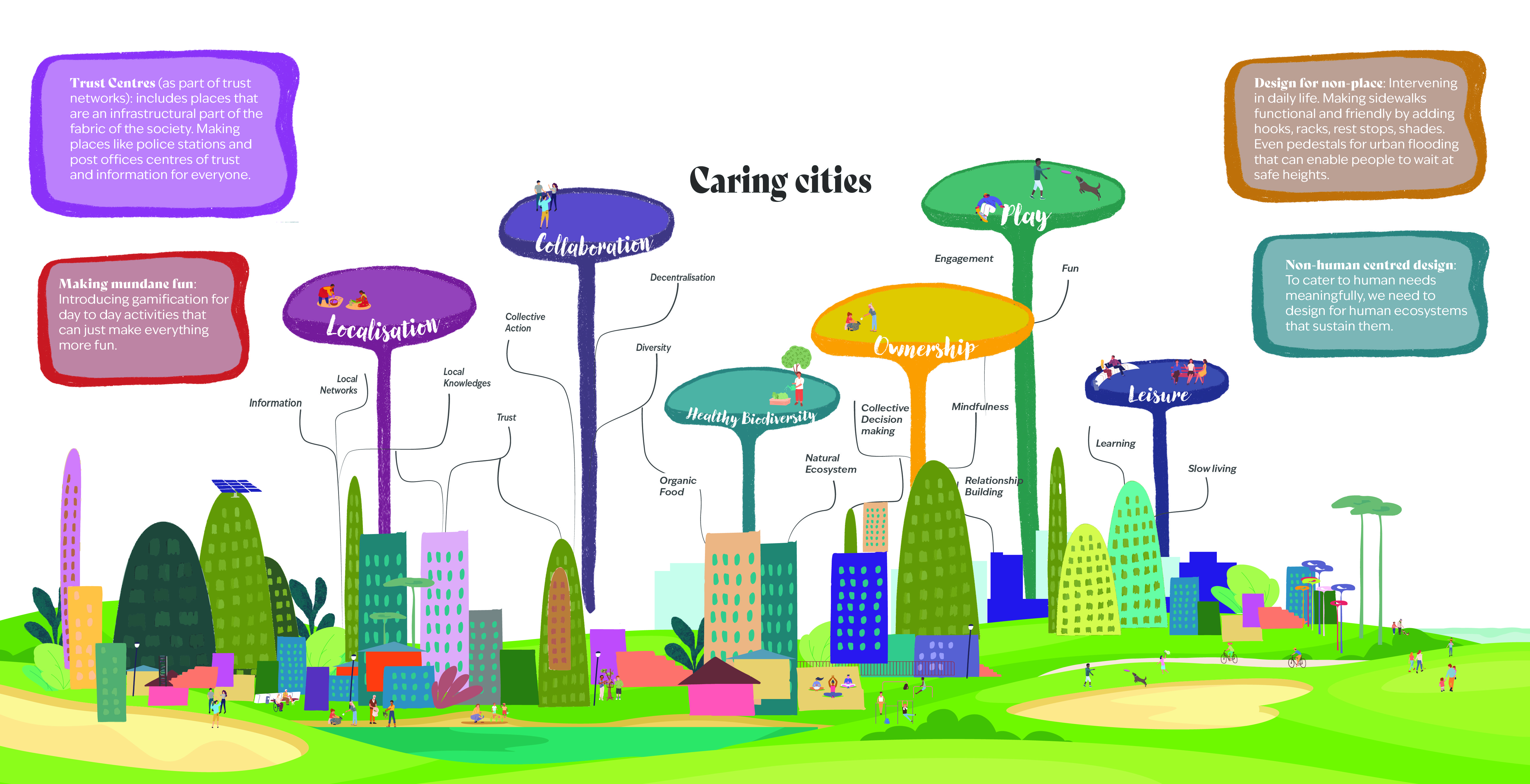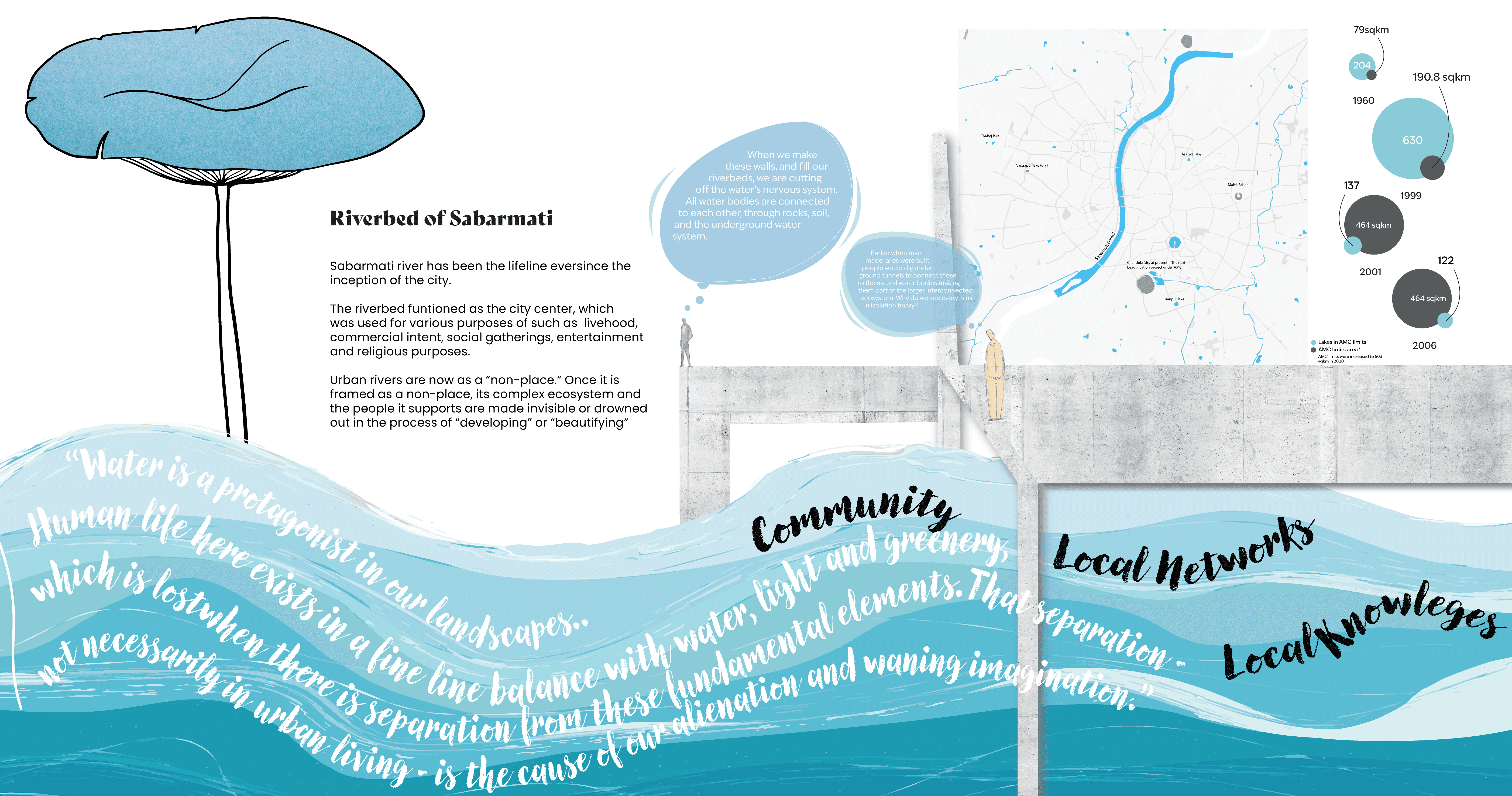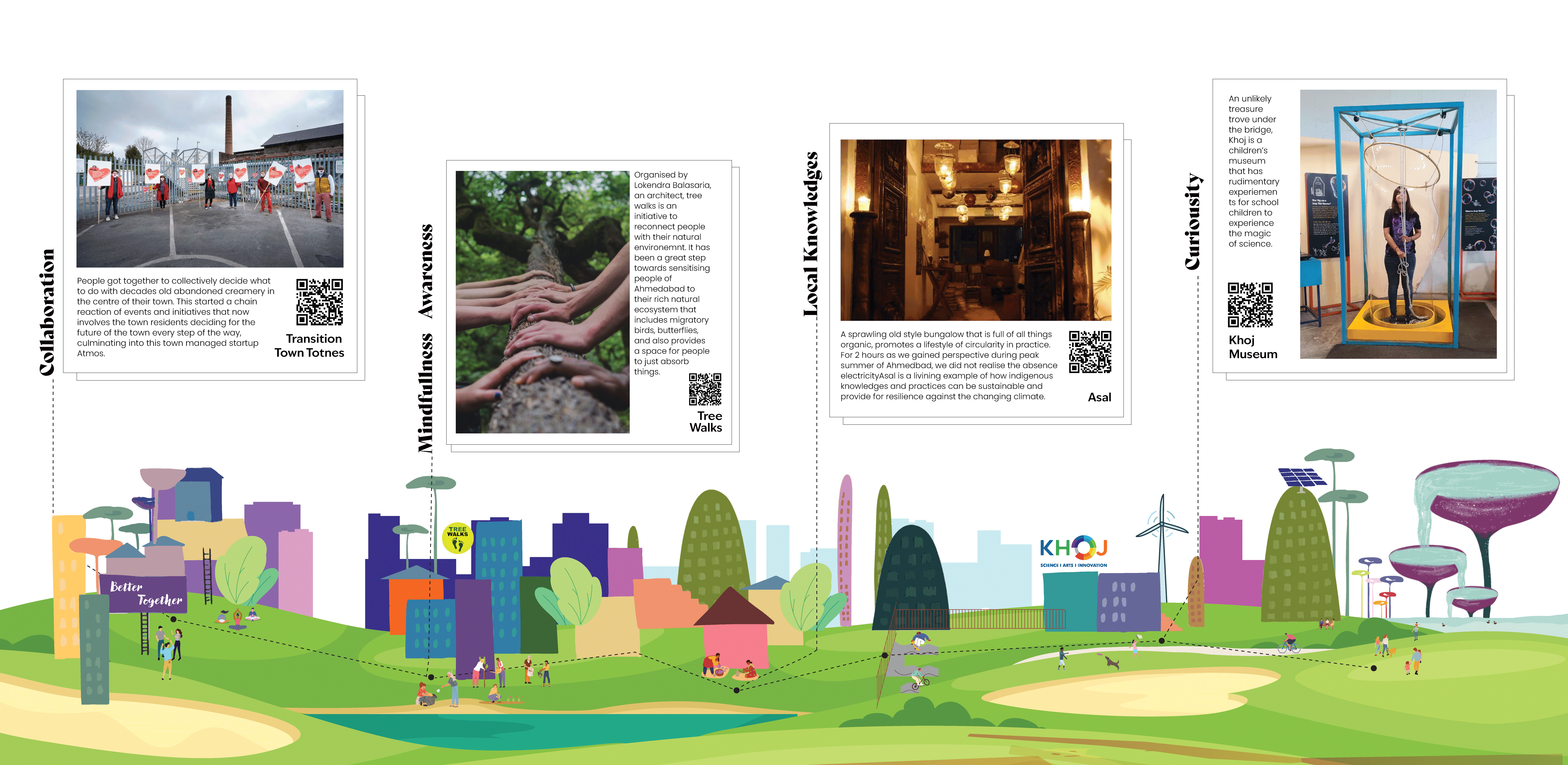© Sneha Bhuva 2023
A Study of Smart Cities for India:
What gives meaning to our life in urban scapes.
Sneha Bhuva | Shreya Ranjan
Guided by: Praveen Nahar, Sahil Thappa
National Institute of Design, Ahmedabad
It begins by examining our current ambitions and how they give rise to notions of creating intelligent, effective urban environments. The comprehension of ‘smart’ encompasses the shared necessities of infrastructure, transportation, prospects for economic expansion, and digital connections. Thus, we explore the developments occurring at present.


Growth and Developement
Examining the case studies of water bodies in Ahmedabad, we discovered that the barriers of progress are disrupting the significant and intangible connections individuals shared with their natural environment and each other. We then inquired about what contributed value to their daily lives in the urban setting. The insights we gained from their responses allowed us to comprehend these intangible relationships.
Energy is in everything and becomes a fundamental connector to the things for which we build a city. Whether you are single, a family or a community the question is, is that city going to energize life? Does that city have the vitality so that t are able to use your time most effectively and create the sort of life you want to have?
"Urban" needs to be redefined. Urban is when there are those facilities by which one can communicate and create, have choices and opportunities and less of a fear.
- Late Balkrishna Vithaldas Doshi
Pritzker Laureate


What are the lost connections?
The invisible/ intangible networks that sustain us are now lost within the walls of growth and development. Some of the emergent channels of such connections were our knowledge of the local context and everything

